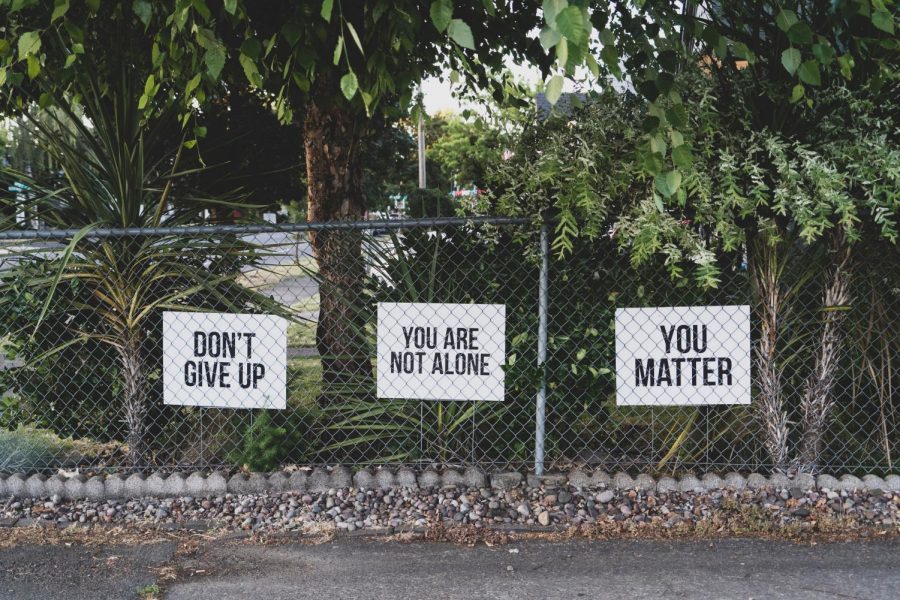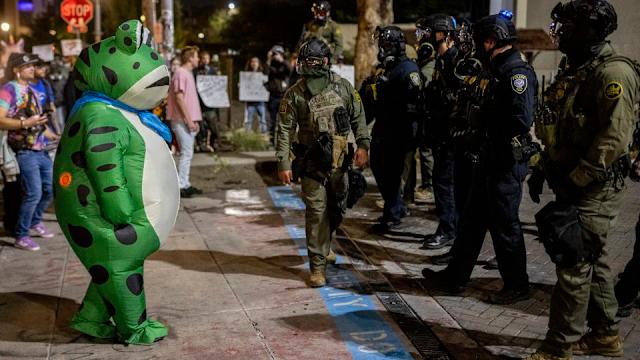National Suicide Prevention Month
September 21, 2021
Suicide prevention is somewhat of a hot-button topic. Especially during September, which is recognized as National Suicide Prevention Month.
Individuals, organizations and institutions often feel some sort of social pressure to respond to National Suicide Prevention Month. After all, who wants to be the jerk that doesn’t speak out on suicide, right?
During September, society is inundated with messaging and programming that attempts to rally support for suicide prevention and mental health at large. Messages like “you matter” and “never give up” swirl around like white noise, statistics are thrown out at rapid speed and hotlines are shared on Instagram stories like a David Dobrik giveaway.
This is all fine and good. And most of the time it’s well-intended.
But it starts to be a major problem when suicide prevention treads the line between care and concern and a public relations move.
Approaching suicide prevention can be difficult because of its complexity, said Ed Betza, an adjunct lecturer in Gannon’s sociology department.
“I used to try and understand suicide from a logical perspective, but no matter how hard I tried, it never made sense to me,” Betza said.
“Rather than trying to understand someone’s thoughts or judging them for those thoughts, I have found it better to simply make myself available to my friends, students, co-workers and family. By being there for those close to me, I believe that I can have a positive impact and may be able to steer them away from dark thoughts or harmful actions.”
Suicide prevention messaging on social media is harmless. But it can go in one ear and out the other. True suicide prevention can require real, systemic change.
People are still going to want to die if they are locked in systems that make them feel ostracized and unwanted. People are still going to want to die if they are overworked and burnt out. People are still going to want to die if a culture of meanness and spite continues to exist around them. People are still going to want to die if the mental health care field continues to fail them.
Hotlines are great resources for moments of crisis or advice. But how can people be prevented from reaching a point where they need to use a hotline?
Statistics are great for understanding the scope of the problem. But how can the root causes of the problem be understood?
Posting quotes on social media is great for sparking a discussion. But what about carrying on deep and meaningful conversations that do more than scratch the surface of suicide prevention?
It is almost impossible to come up with one, all-encompassing solution to suicide. But broad or cliche social media posts that reiterate the same quote that has been posted countless times before and statistics offer little to no solution at all.
Mikel-Bryan Ott, a junior accounting and sports management major, said that messages on social media are not enough to combat negative mental health.
“There have been times I wanted to give up and I desperately needed a real, genuine hug from someone that cared, and I wasn’t able to, and I just did what most guys do and toughened up because I had no choice,” Ott said. “Sometimes social media messaging is not going to be effective because the person in need might need to see effort shown toward them or to hear it in person.”
Ott also said that hotlines are minimally effective and meaningful.
“In my opinion, I don’t think they are very effective because of the bias of the job; they have to help you,” Ott said. “When I’m down I want to hear from someone who knows me or genuinely cares.”
Mental health must be a top priority not just in conversation alone. It must be a priority that is deeply embedded in systems and resource allocation.
Jodi Giacomelli, Ph.D., director of Gannon’s Counseling Center, said that mental health conversations must be a part of all communities within the university.
“The topic of mental health needs to be infused into academics and athletics and student clubs and organizations… into every aspect of our campus community,” Giacomelli said.
However, any conversation that is had regarding mental health will be rendered ineffective if there are not sufficient resources available to carry out the ideas that came forth from that conversation.
Anna Brink, a senior English major, said that from a student’s perspective, it sometimes feels that universities have other priorities when it comes to resource allocation, especially when it comes to mental health resources.
“I believe many universities are understaffed in this aspect and the wait to talk to a specialized individual in mental health only drives students away from asking for help,” Brink said.
Mental health advocacy can be messy and chaotic and hard. It is not always beautifully crafted speeches and grandiose acts.
It is rolling up your sleeves and getting down in the trenches. It is about showing radical kindness to others, even in the most difficult of situations. It is about analyzing and calling out the systems and institutions that leave people feeling hopeless. It is about being willing to assess the effectiveness and the inclusivity of the systems in place. And reassess. And reassess again.
At Gannon and other college campuses, it should be about including student feedback and experiences into this assessment.
Julianna West, a sophomore nursing major, said that Gannon is making progress in this regard.
“This semester has been much different than what I experienced my freshman year in a way that there have been many more conversations about mental health and suicide prevention,” West said. “I am so thankful that Gannon is taking this seriously and implementing various ways to help students and let us know that they are here for us.”
It should be about calling out the social injustices that lead to disparities in mental health.
For example, Ott said that racism directly impacts his mental health.
“As an African American male, I have constant fear and insecurity just because of my skin color,” Ott said. “I feel so much mental pressure trying to prove the stereotype wrong. This adds to my depression a lot.”
And to be frank, some days suicide prevention can just mean not being a jerk.
Words of support and quotes on a social media page mean absolutely nothing if the person initiating them leaves others feeling worthless with their words or actions.
Sydney Grinchuk, a junior nursing major, said that posting about suicide prevention on social media does not necessarily correlate to caring about suicide prevention or mental health.
“Those are the same people that make fun of others in class, those are the same people that treat others poorly and laugh about it and those are the same people that ignore my texts whenever I’m upset,” Grinchuk said.
Cam Klawon, a sophomore occupational therapy major, said that suicide prevention starts with everyday actions and kindness.
“To me, suicide prevention means being there for and always kind and conscious of the people around you because you never know what someone is going through from what they show you on the surface level,” Klawon said. “We lose so many people, young and old, every day because they are struggling with a mental health battle, and no one even knows.”
Above all, it is about working toward a world where even (and especially) the mentally ill do not have to be afraid. A world where they do not have to be afraid to live, a world where they do not have to be afraid to get help and a world where they do not have to be afraid to merely exist in the systems that are supposed to help them.
It is about working toward a world where it is recognized that no amount of social media posts, statistics or public relations efforts can assuage these fears.
A world where the work being done is difficult and intricate, yet beautiful and fruitful.
ANNA MALESIEWSKI






